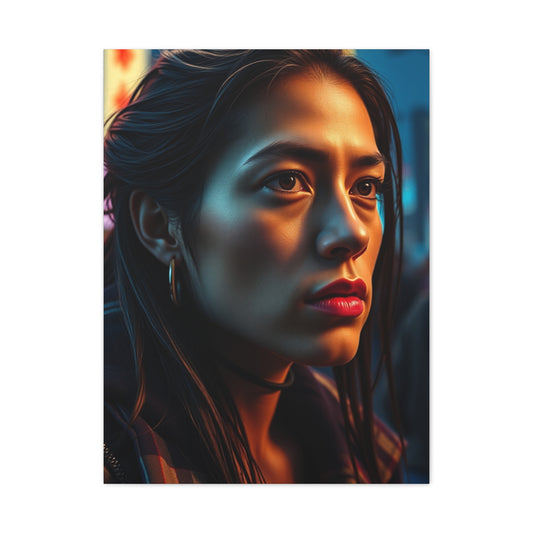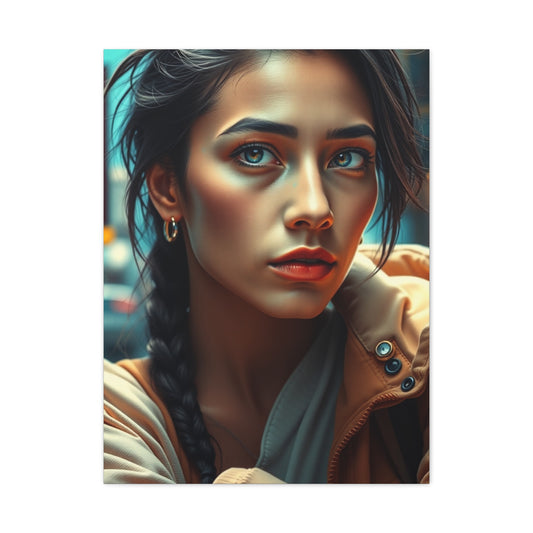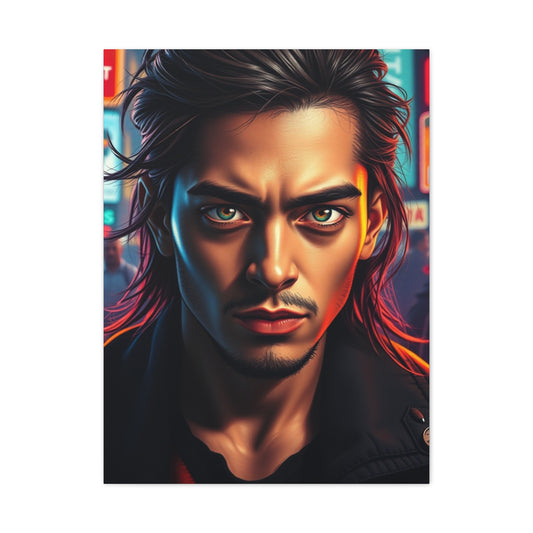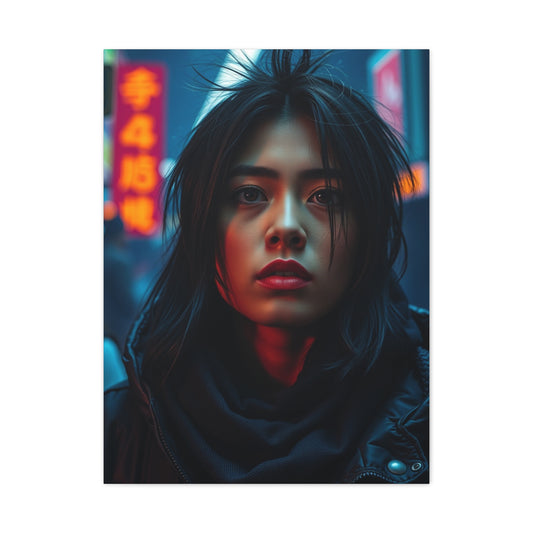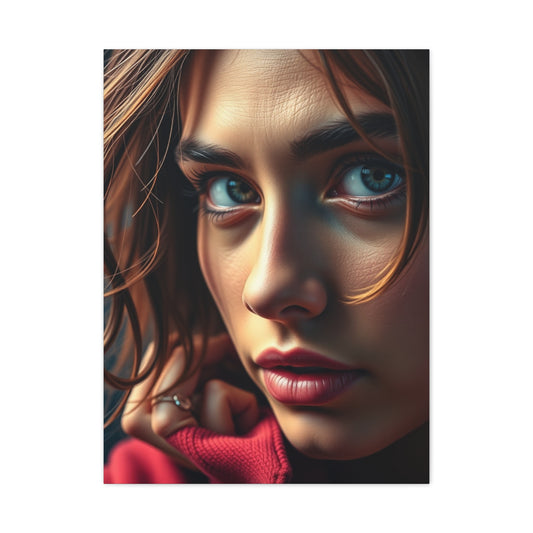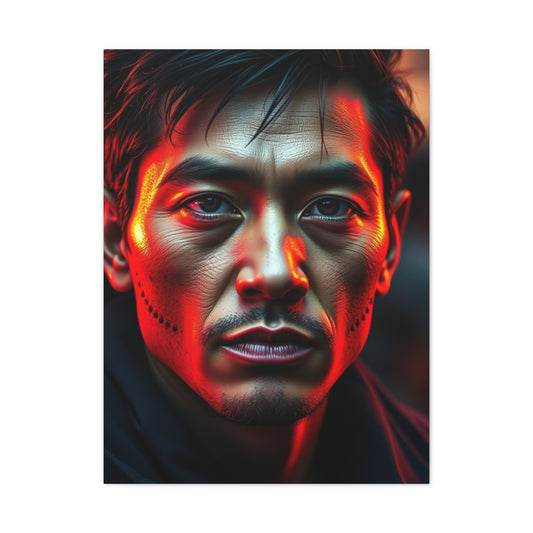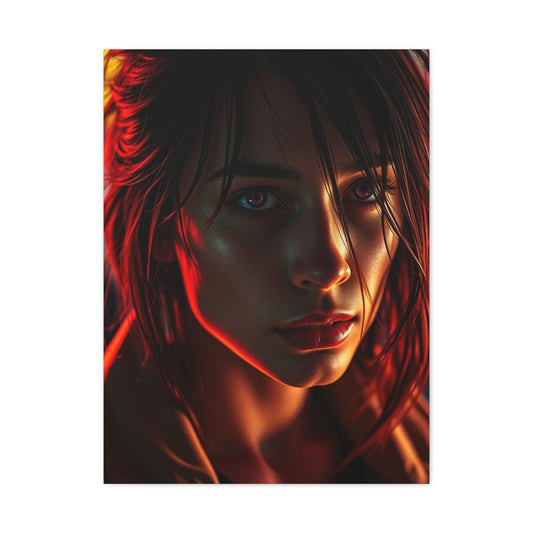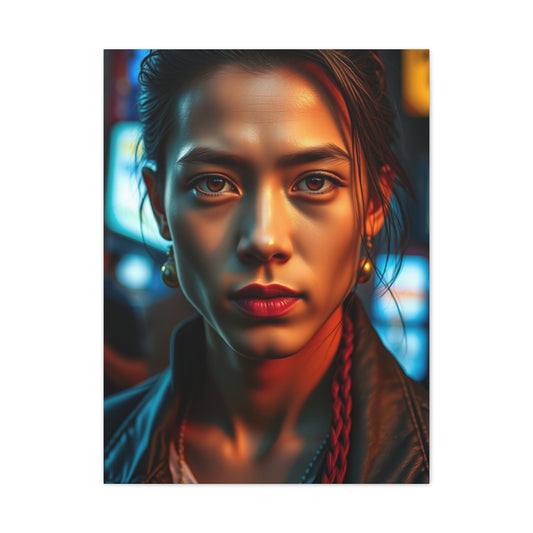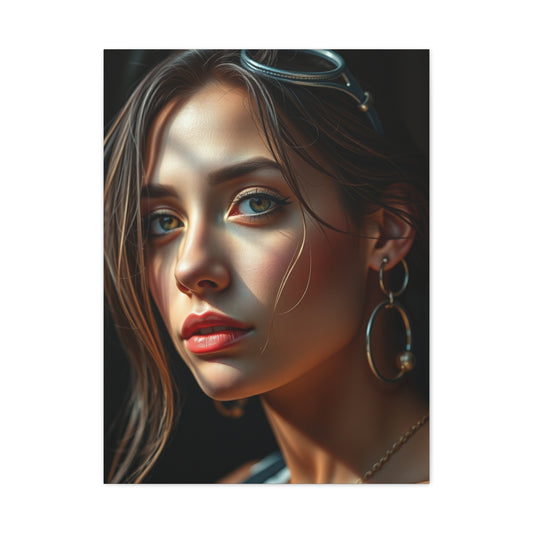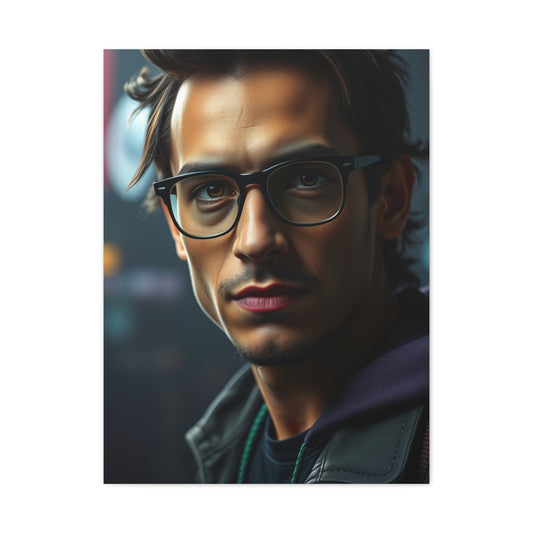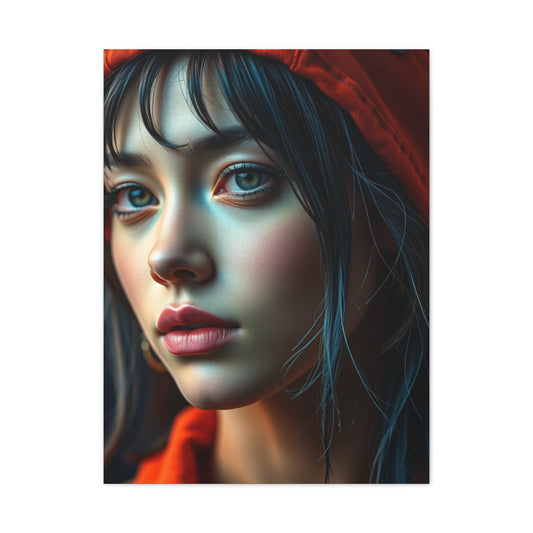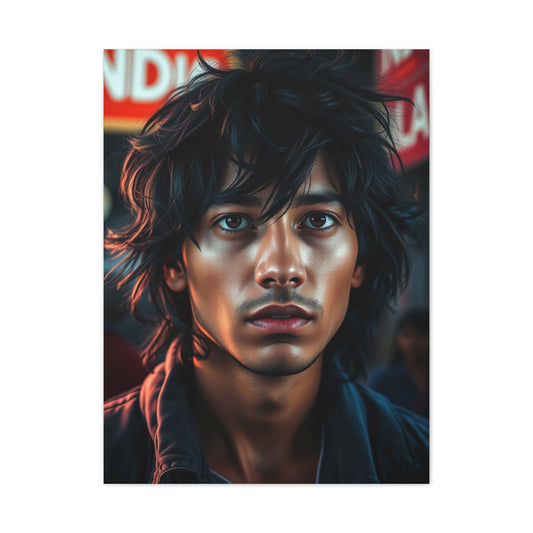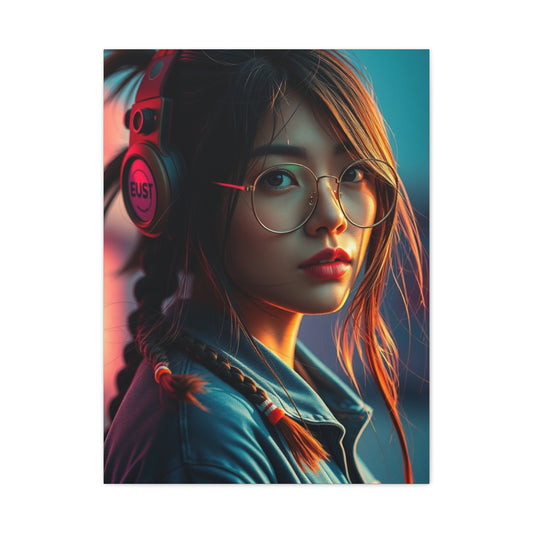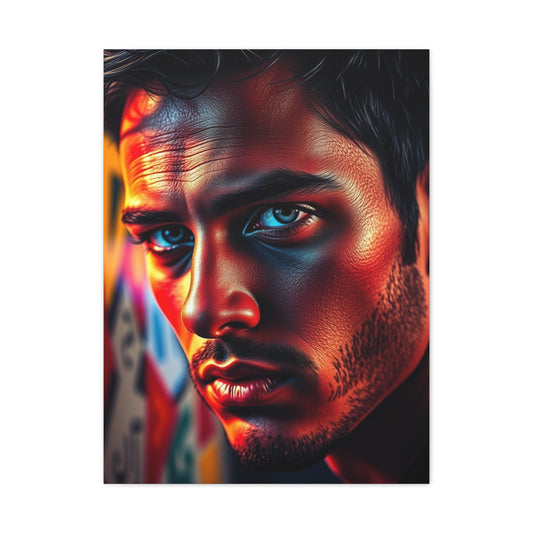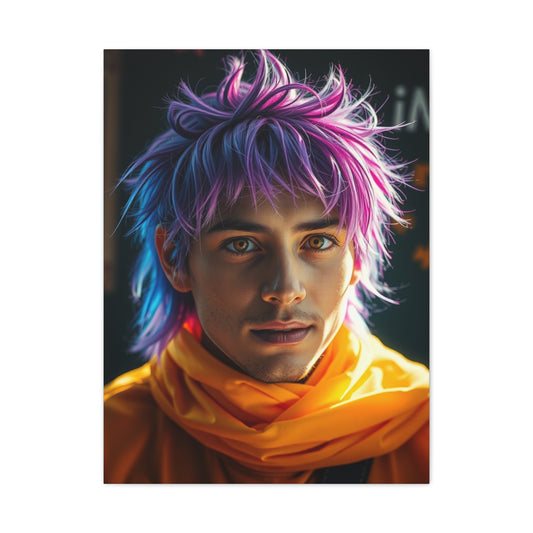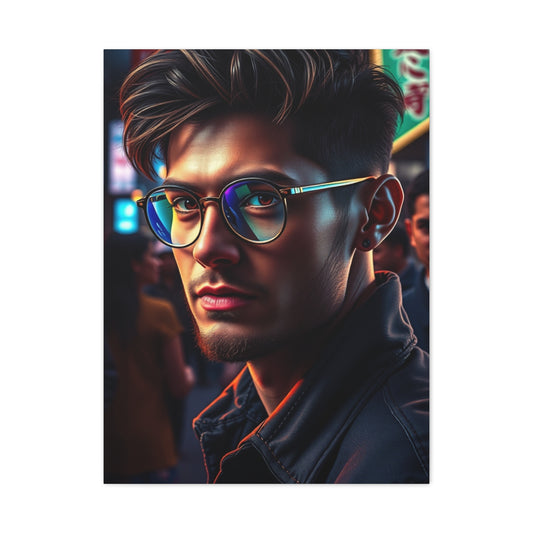Exploring the Power of Indie Wall Art in Home Décor
Indie style in interior design is an exploration of independence, self-discovery, and individuality. Unlike traditional design approaches that follow well-documented guidelines or set aesthetics, indie décor is an open-ended journey where personality takes the lead. At its essence, the term indie—derived from independent—represents the courage to cultivate spaces that are not shaped by rigid expectations but by personal stories and emotional resonance.
In the context of home environments, indie wall art prints become the most immediate and effective medium to establish this personal language. They act as silent narrators of taste, memory, and emotion, shaping the character of a room without demanding conformity. Instead of following conventional design playbooks, indie style empowers a homeowner to embrace art that feels authentic and original, no matter how unconventional it may appear to others.
Why Wall Art Is Central to Indie Décor
Among the many layers that define a room—furniture, lighting, textiles—wall art possesses a distinct power. It creates focal points, fills empty expanses, and transforms otherwise muted walls into reflections of personal identity. For those who lean into indie décor, wall art is not simply decoration but a declaration. It is where emotions, moods, and inspirations are embedded, giving the space vitality.
Unlike mass-produced decorative elements, indie wall art often carries eclecticism, subtle irregularity, or even raw imperfection. These qualities infuse the home with warmth and individuality. When chosen with intention, wall art has the capacity to amplify atmosphere, whether it’s bold and playful or quiet and contemplative.
The Philosophy of Individual Expression
To truly appreciate indie style, one must grasp its underlying philosophy: freedom of self-expression. This freedom encourages an open attitude toward mixing styles, experimenting with unconventional themes, and embracing contrasting moods. Where minimalism may seek purity of form and modernism emphasizes function, indie style thrives in the boundless interplay of creativity.
Imagine a hallway filled with vibrant collages alongside a subdued sketch, or a bedroom where a neon-tinged urban print hangs above a rustic nightstand. The absence of boundaries allows homeowners to combine what speaks to them, even if the choices seem discordant in traditional design logic. The result is an environment that resists replication and celebrates authenticity.
How Indie Wall Art Shapes Atmosphere
The role of indie wall art prints is not confined to mere aesthetics. Each piece radiates a tone, altering the psychological landscape of the room. A colorful abstract can inject joy and energy into a dull corner, while a black-and-white urban photograph may create a sense of depth and edge. By carefully layering these visual components, a home becomes a dynamic portrait of the people who inhabit it.
Indie décor thrives on mood-making. Instead of striving for cohesion in the conventional sense, it strives for resonance. A series of eclectic prints arranged across a gallery wall might seem unrelated at first glance, yet together they create an atmosphere that feels deeply personal. The essence lies not in uniformity but in the authenticity of what the pieces collectively convey.
The Freedom from Conventional Rules
Traditional interior design often emphasizes balance, symmetry, and thematic consistency. Indie style breaks away from these expectations. It does not insist that a room follow one aesthetic lineage, nor does it discourage juxtaposition. For instance, a surrealist landscape may share the same wall with a minimalist geometric print, their conversation creating intrigue rather than discord.
This freedom can feel daunting to those accustomed to structure. Yet it is precisely this openness that makes indie wall art such an empowering form of décor. It invites exploration without fear of missteps. If a piece feels right—if it resonates with memory, emotion, or aspiration—it belongs.
Indie Wall Art as Storytelling
Every home tells a story, and indie wall art is the language through which those stories unfold. Prints may echo travels, highlight personal values, or pay homage to favorite creative movements. A person drawn to gritty urban imagery may be celebrating the vibrancy of city life, while someone who chooses botanical illustrations may be expressing an affinity for nature’s quiet rhythms.
Unlike decorative trends that prioritize visual polish, indie décor values narrative. The wall becomes a canvas of lived experiences, aesthetic inclinations, and even contradictions. The richness of this storytelling lies not in perfection but in sincerity.
Mood Variations Through Artistic Choices
The versatility of indie wall art means it can cater to an infinite range of moods. A brightly colored surrealist piece can elevate energy levels in a living room, encouraging social engagement. In contrast, a subdued abstract may instill serenity in a bedroom, preparing the mind for rest. An urban-inspired neon print may evoke nostalgia for nightlife and freedom, while a watercolor landscape might transport one to the serenity of a distant horizon.
This adaptability is what makes indie décor both exciting and challenging. The task is not to adhere to a predetermined formula but to listen to what feels appropriate for the desired atmosphere.
The Eclectic Nature of Indie Décor
Eclecticism is often misunderstood as randomness, but within the indie framework, it carries intentionality. The combination of diverse styles is not haphazard; it is curated with an eye toward emotional coherence rather than visual uniformity. A colorful collage placed near a monochrome sketch creates tension, but it is precisely that tension that gives the space vitality.
Indie décor allows the unexpected to flourish. Contradictions are not mistakes but deliberate expressions of complexity. This openness to paradox distinguishes it from more rigid design approaches.
Transforming Space with Limited Means
One of the understated strengths of indie wall art is its ability to transform a space without requiring extensive resources. A few carefully chosen prints can shift the entire ambiance of a room. The flexibility of indie décor lies in its scalability: it can thrive in small apartments, spacious lofts, or cozy cottages. The art itself becomes the defining element, eclipsing the need for elaborate furniture or high-budget design schemes.
Through this lens, indie style is accessible, democratic, and deeply personal. It reminds us that individuality does not require grandeur but authenticity.
Emotional Resonance of Indie Prints
Art is often measured by its ability to provoke emotion, and indie wall art excels in this capacity. Because it is chosen for personal resonance rather than trend compliance, the emotional connection runs deep. A piece may remind someone of childhood landscapes, evoke the thrill of past travels, or embody a personal philosophy.
Living in an environment filled with such resonance creates a deeper sense of belonging. The home becomes not just a place of shelter but a reflection of identity.
The Continuum Between Chaos and Serenity
Indie décor thrives in balancing opposites. It is as comfortable in chaos as it is in serenity. An arrangement of explosive, brightly colored prints can coexist with a tranquil monochrome drawing. This spectrum allows homeowners to modulate spaces according to function and mood.
A studio space may flourish with chaotic, stimulating art to inspire creativity, while a bedroom may benefit from calm and minimalistic prints. The fluidity between these extremes allows indie style to remain endlessly adaptable.
The Role of Imperfection
Another distinguishing feature of indie wall art is the celebration of imperfection. Slightly uneven frames, handmade prints, or artwork with raw textures are not flaws but markers of individuality. They emphasize the human touch in an age where uniformity often dominates design. This embrace of imperfection echoes the Japanese aesthetic of wabi-sabi, where beauty is found in transience and irregularity.
Imperfection also breaks down barriers between art and the viewer. It invites interaction, curiosity, and reflection rather than passive observation.
Why Indie Wall Art Appeals to Modern Lifestyles
Contemporary life often oscillates between speed and disconnection. Indie décor provides a counterbalance by reintroducing intimacy into spaces. By surrounding oneself with personally meaningful art, daily routines are infused with subtle reminders of individuality. Instead of being shaped by external expectations, the home becomes an inner sanctuary.
For urban dwellers, especially, indie wall art offers a reprieve from uniformity. Apartments built on identical blueprints can be transformed into distinct reflections of their inhabitants. A hallway that might otherwise feel sterile suddenly carries vibrancy when adorned with eclectic prints.
Practical Approaches to Starting with Indie Wall Art
For those new to indie décor, beginning the journey can feel overwhelming. The simplest approach is to start small—perhaps with one or two prints that resonate on a personal level. From there, experimentation can unfold gradually, adding or rearranging pieces as intuition dictates.
Gallery walls are a popular method, allowing multiple styles and moods to coexist. Another approach is thematic clustering—placing nature-inspired works in one corner, abstract art in another. Yet the guiding principle remains the same: trust instinct over convention.
The Evolutionary Nature of Indie Spaces
An indie-inspired home is never static. It evolves alongside its inhabitants, expanding, shifting, and transforming with time. As experiences accumulate and tastes mature, the collection of wall art adapts, weaving new chapters into the visual narrative of the space.
This ongoing evolution ensures that an indie home never feels stale. It is a living, breathing expression of the people who inhabit it.
The Power of Color in Interior Spaces
Color has always been one of the most immediate tools in shaping atmosphere. It transcends language and strikes directly at emotion. In the realm of indie décor, bright and colorful wall art prints play a profound role in defining energy within a room. A kaleidoscopic composition can lift spirits, spark imagination, and alter how we experience a space. Unlike neutral tones that often serve as a backdrop, vivid hues demand attention and set a clear mood.
When used within indie style interiors, colorful wall art becomes more than ornamentation; it becomes an emotional anchor. These pieces can turn a dull wall into an expressive statement, a visual beacon that radiates vitality.
Color Psychology and Indie Style
The psychology of color is not new, but indie décor interprets it with a unique independence. While traditional interior design often limits bold hues to accent roles, indie spaces embrace them without fear of dominance. A crimson abstract, for example, might occupy an entire wall, infusing the room with intensity and passion. A pastel collage may soften the environment, encouraging calmness and creativity.
The beauty of indie wall art prints lies in their refusal to follow prescribed palettes. Colors can clash, harmonize, or exist in unexpected combinations, producing visual rhythms that feel alive. By embracing vibrant color, indie style demonstrates that the emotional resonance of a space is not determined by convention but by authenticity.
From Pop Art to Surrealism
Bright and colorful wall art often draws inspiration from movements such as pop art, surrealism, or abstract expressionism. Within an indie context, these influences are reinterpreted in personal ways. A piece that echoes the bold patterns of pop art might be displayed next to a dreamy surrealist landscape, producing contrast and harmony simultaneously.
This eclecticism underlines the essence of indie décor: the freedom to mix genres without constraint. By combining diverse approaches to color, homeowners create a gallery that reflects their individuality rather than a curated design doctrine.
The Role of Contrast
Vibrancy becomes more striking when placed against contrast. In indie interiors, colorful prints may be showcased on whitewashed walls to maximize impact, or set against dark backgrounds for a dramatic flair. This interplay amplifies both the artwork and the surrounding environment.
Contrast is not limited to light and dark; it also emerges from style. A vivid abstract placed near a rustic wooden frame or vintage furniture creates dialogue between eras. Indie wall art thrives in this juxtaposition, making colorful pieces even more captivating.
Emotional Vibrancy in Living Spaces
Living rooms often benefit most from the infusion of bright and colorful indie wall art. These shared spaces thrive on energy and social interaction. A bold print can serve as a conversational centerpiece, igniting discussions and drawing the eye. Unlike subdued art that recedes into the background, colorful works demand attention, reminding visitors that the space celebrates individuality.
Bedrooms, too, can harness vibrant tones, though with more subtlety. Pastel abstracts or whimsical surrealist prints can create a dreamlike quality, balancing stimulation with serenity. The versatility of color ensures that even within private spaces, vibrancy can feel nurturing rather than overwhelming.
The Interplay Between Pattern and Hue
Patterns often work in tandem with bright colors to enhance the energy of indie wall art prints. Repetitive motifs in electric hues create rhythm and movement, energizing the viewer. Geometric shapes in vibrant tones can add modern flair, while organic patterns in saturated colors bring dynamism and vitality.
This relationship between pattern and color demonstrates how indie style thrives in complexity. It does not fear visual busyness; instead, it celebrates it as part of an eclectic narrative.
Bright Colors as Identity Markers
Choosing colorful indie wall art is often an act of self-definition. For many, bold hues symbolize optimism, creativity, or audacity. A vibrant print can act as a mirror to the owner’s personality, signaling joy or adventurousness. For others, it represents a deliberate challenge to uniformity, an insistence on uniqueness in a world of sameness.
By filling walls with color, individuals carve out spaces that resist conformity. Every hue becomes a statement of identity.
Creating Harmony Through Eclectic Choices
While indie décor thrives on freedom, there remains a subtle art to creating harmony among colorful prints. The goal is not rigid uniformity but emotional coherence. For example, a living room may feature multiple prints with differing subjects but connected through recurring tones—perhaps recurring yellows, blues, or pinks—that tie the collection together.
Another approach is thematic juxtaposition: pairing surreal landscapes with playful portraits, both drenched in vibrant palettes. Though distinct in subject, they share an emotional vibrancy that resonates together. Indie wall art invites this kind of intuitive curation, where harmony is felt rather than calculated.
When Color Meets Minimalism
It may seem paradoxical, but indie wall art also accommodates minimalism within bright palettes. A piece dominated by a single striking hue against a plain backdrop can be just as powerful as a busy collage. This restrained approach allows the color itself to carry the weight of emotion, stripping away complexity to reveal purity.
Minimalist color blocks or sparse abstract shapes in vivid tones demonstrate how indie décor adapts even the language of simplicity.
Cultural Influences in Colorful Art
Bright and colorful prints often borrow inspiration from global traditions. Vibrant textiles, folkloric motifs, or festival-inspired hues find new expression within indie décor. These cultural echoes enrich the home by infusing it with diversity and global imagination.
By displaying prints that incorporate these influences, homeowners not only celebrate visual vibrancy but also acknowledge broader narratives of cultural creativity. Indie wall art becomes both personal and universal in this way.
Practical Considerations for Colorful Wall Art
Incorporating colorful indie prints requires a balance between spontaneity and placement. Too many competing hues in one corner may overwhelm, while a thoughtful distribution across the room can create balance. Larger pieces often serve as focal points, while smaller prints can accentuate corners or hallways.
Frames also play a significant role. A white frame may accentuate vibrancy, while a dark frame can provide grounding. Indie décor often experiments with mismatched frames, further reinforcing its eclectic charm.
Bright Colors in Small Spaces
In compact spaces, bright and colorful wall art can work wonders. A single large print in saturated hues can expand the perception of depth and draw the eye upward. Smaller, colorful pieces grouped can turn narrow hallways into dynamic passages. Even in modest apartments, color can infuse energy and prevent the space from feeling confined.
The adaptability of colorful indie wall art ensures that size never limits vibrancy.
The Playfulness of Childlike Imagery
One fascinating dimension of colorful indie wall art is its embrace of childlike playfulness. Doodles, whimsical creatures, and naïve drawings in radiant colors evoke innocence and joy. Far from being simplistic, these pieces introduce levity into adult spaces, reminding us that design need not be solemn to be meaningful.
This playful energy is a hallmark of indie style—it thrives on imagination, humor, and unconventional choices.
Shaping Seasonal Atmosphere with Color
Colorful indie wall art also offers flexibility in reflecting seasonal moods. Bright florals can capture spring’s vitality, while golden abstract tones may echo autumnal warmth. Winter spaces can be enlivened with vivid blues or jewel tones, while summer may welcome tropical palettes. This adaptability allows homeowners to refresh the atmosphere with the seasons, keeping spaces dynamic and responsive.
The Balance Between Chaos and Clarity
Bright and colorful prints sometimes risk overwhelming a room, but indie style thrives on balancing chaos with clarity. A chaotic composition can be tempered by surrounding minimalist décor, or multiple vibrant prints can be arranged with deliberate spacing to allow breathing room.
This interplay ensures that color feels exhilarating rather than exhausting. The home becomes a space where vibrancy coexists with livability.
Emotional Healing Through Color
Beyond aesthetics, bright colors often provide emotional healing. Yellows radiate warmth and positivity, blues calm the spirit, reds invigorate energy, and greens restore balance. By integrating these hues into indie wall art, a home becomes a therapeutic environment. The colors do not merely decorate—they nurture.
For those seeking joy, energy, or serenity, colorful prints become silent companions in daily life.
The Urban Pulse in Interior Design
Cities have always embodied both chaos and creativity. Streets filled with graffiti, industrial textures, and neon lights tell a story of resilience and raw energy. Within indie décor, gritty and urban wall art prints capture that spirit and bring it indoors. Unlike polished traditional designs, these works celebrate the imperfections, edges, and contradictions of city life.
Incorporating urban-inspired indie wall art into home spaces allows inhabitants to bridge the gap between bustling streets and private interiors. The result is an atmosphere that feels contemporary, daring, and alive.
Defining the Gritty Aesthetic
The term “gritty” in art and design often refers to something unrefined, textured, or unapologetically raw. In indie wall art prints, grit is expressed through smudged lines, distressed surfaces, bold typography, or rebellious themes. Rather than concealing imperfections, these works highlight them, transforming flaws into features.
For indie style interiors, grit adds dimension. A wall adorned with raw urban prints becomes more than a backdrop; it becomes a declaration of authenticity and resistance against sterile uniformity.
The Influence of Graffiti Culture
Graffiti has long been a controversial yet powerful art form. Emerging from city streets as a mode of rebellion and expression, it has since become a vital influence on modern aesthetics. Within indie wall art, graffiti-inspired prints embody freedom, urgency, and vibrancy. They bring the streets indoors without stripping them of their rebellious spirit.
When used in indie décor, graffiti prints can enliven minimalist spaces, creating a dramatic contrast between rawness and simplicity. They may also be layered with other urban motifs, amplifying the sense of energy that defines the gritty aesthetic.
Black and White Narratives
While color often dominates the conversation in design, gritty urban wall art frequently thrives in monochrome. Black and white prints capture stark realities, emphasizing contrast and shadow. These pieces evoke photographic depth, turning cityscapes, alleys, or architectural fragments into striking visual stories.
Monochrome also provides balance in eclectic indie interiors. Surrounded by colorful works, a black-and-white urban print can anchor the collection, giving the eye a point of focus and grounding the room’s energy.
Neon Glow and Urban Vibrancy
Cities at night are defined by their neon glow—signs buzzing above streets, reflections dancing on wet pavement. Indie wall art often reinterprets this vibrancy through prints infused with electric hues and glowing highlights. These works capture the sensory overload of urban nightlife and bring its rhythm into domestic spaces.
Displayed in a living room or lounge, neon-inspired art evokes excitement and intensity, turning the space into an atmosphere reminiscent of late-night wanderings through metropolitan avenues.
The Industrial Connection
Another aspect of gritty urban indie décor lies in industrial imagery. Exposed brick, rusted metal, concrete textures, and weathered wood often find their way into indie wall art prints. These visuals convey endurance, age, and history.
Industrial-inspired wall art complements spaces that already embrace raw materials. A loft with exposed beams or pipes pairs naturally with prints depicting steel bridges, abandoned factories, or weathered signage. Together, they create coherence between art and architecture.
Urban Landscapes as Storytellers
Every city has its landmarks, alleyways, and hidden corners. Indie wall art transforms these landscapes into storytelling devices. A print of a rain-slicked street corner, a graffiti-covered subway, or a skyline drenched in fog speaks not just of place but of atmosphere.
For homeowners, these prints can act as nostalgic reminders of cities lived in or traveled through. They also resonate with those who long for the rhythm of urban life, even if they reside far from its bustle.
The Role of Texture in Gritty Art
Texture is crucial in gritty indie wall art. Smudged lines, layered paint effects, or digital grain replicate the tactile qualities of worn surfaces. These details give prints a sense of depth, as though they carry the weight of the streets themselves.
In interiors, textured prints contrast beautifully with smooth surfaces—think polished tables or pristine walls. The friction between raw and refined is central to the indie ethos.
Creating Atmosphere with Grit
Gritty and urban wall art doesn’t just decorate—it transforms atmosphere. A sterile room becomes electric with a single urban print. Hallways feel like city alleys, and living rooms resonate with the energy of nightlife. These pieces infuse spaces with attitude and edge, creating unapologetically bold moods.
Unlike neutral décor that fades quietly into the background, gritty wall art demands acknowledgment. It challenges viewers to engage, to confront, and to reflect on the stories embedded within.
Urban Edge in Private Spaces
While living rooms and communal areas often host gritty prints, private spaces like bedrooms or studios also benefit from their raw energy. A bedroom wall with a single black-and-white urban scene can create intimacy and grounding. A studio infused with graffiti art may inspire creativity, mirroring the unfiltered spontaneity of street expression.
Even bathrooms or transitional spaces like stairwells can gain unexpected vibrancy through gritty indie wall art, transforming forgotten corners into conversation pieces.
The Balance Between Rebellion and Comfort
Urban-inspired prints embody rebellion, but they need not overwhelm comfort. Indie décor thrives in striking balances, where edgy art coexists with cozy furniture, soft fabrics, and warm lighting. A gritty piece above a comfortable couch does not create dissonance but harmony, showing that rebellion and relaxation can coexist within the same environment.
This synthesis is what makes indie style appealing—it recognizes that individuality often exists at the intersection of contradictions.
Typography as Urban Expression
Typography also plays a significant role in gritty indie wall art. Bold letters, distressed fonts, and cryptic phrases evoke the visual language of posters, graffiti tags, and street signage. These works convey not only visual appeal but also linguistic rhythm.
Placing typographic prints in interiors infuses them with directness. A single word in bold black strokes can carry as much emotional weight as a detailed cityscape.
Gritty Art as Social Commentary
Urban art often carries undertones of commentary—on society, politics, or cultural identity. Indie wall art prints inspired by these traditions maintain that voice. They transform living spaces into platforms where viewers confront ideas beyond aesthetics. A print of a weathered protest mural, for instance, speaks to resilience and struggle.
For homeowners who value expression beyond decoration, gritty prints serve as reminders of the interconnectedness between personal spaces and broader cultural narratives.
The Emotional Energy of Grit
While some view grit as harsh, others find it grounding. Urban prints filled with shadow and texture can create an atmosphere of honesty, cutting through the polished surfaces of modern life. They remind us of the imperfect, the transient, and the real.
For many, this authenticity provides comfort. A gritty alley scene may evoke nostalgia, a reminder of long walks through familiar neighborhoods. A neon-lit street may spark memories of youth, spontaneity, and discovery.
Practical Considerations for Urban Prints
When incorporating gritty indie wall art, scale and placement matter. Large-scale urban scenes can dominate living rooms, while smaller prints may accentuate hallways or corners. Pairing gritty art with neutral walls highlights its intensity, while juxtaposing it against vibrant décor creates dynamic tension.
Frames can also enhance or soften grit. A sleek black frame amplifies rawness, while a natural wood frame provides warmth and balance. Indie style often embraces mismatched framing, enhancing eclectic character.
Urban Grit in Small Apartments
For small apartments, gritty indie wall art offers a way to capture city life without sacrificing space. A single oversized print of a skyline or graffiti wall can expand the perception of depth. Clustered smaller prints can create the impression of a gallery, transforming compact living areas into vibrant hubs of personality.
The adaptability of gritty art ensures that even modest interiors can reflect metropolitan spirit.
The Essence of Mood in Interior Spaces
Moody and abstract wall art prints offer a distinct dimension to indie décor. While color and urban grit are immediate and visceral, abstract pieces evoke emotion through ambiguity, form, and subtle tonal shifts. The mood conveyed by these prints can define the character of a room more subtly than literal representations. A moody landscape or abstract composition can influence perception, creating an atmosphere that encourages reflection, introspection, or even quiet exhilaration.
Indie wall art prints in the abstract realm allow homeowners to express complex emotional states without being constrained by narrative. The ambiguity of forms, the interplay of light and shadow, and the layered textures invite viewers to interpret and engage personally.
Defining Abstract in Indie Style
Abstract art in indie décor is not just about shapes or colors detached from reality; it is about capturing essence, feeling, and intuition. Lines may swirl unpredictably, shapes might collide, and colors can flow in ways that defy logic, yet they communicate something deeply human. In the context of interior design, these elements shift focus from literal representation to experiential resonance.
Moody abstracts specifically explore the liminal spaces of emotion—uncertainty, contemplation, melancholy, or quiet passion. They allow a room to breathe emotionally, adding layers that complement other decorative elements without overpowering them.
The Role of Ambiguity
Ambiguity is central to the power of abstract indie wall art prints. Unlike traditional or thematic art, which conveys clear messages, abstract pieces leave interpretation open to the viewer. A darkened gradient may feel serene to one person and introspective to another; a chaotic swirl may evoke creativity or anxiety depending on perception.
This openness is perfectly aligned with indie style, which values personal resonance above rigid aesthetic rules. It invites each inhabitant or visitor to form a relationship with the piece, making the home a dynamic space of emotional dialogue.
Light, Shadow, and Tonal Nuance
Mood in abstract wall art often emerges from the manipulation of light, shadow, and tonal variation. Prints that play with gradient transitions, muted shadows, or deep contrasts create a sense of depth that can redefine the perception of space. A dimly toned abstract can make a room feel intimate, while a high-contrast composition energizes a corner or hallway.
Indie décor leverages these subtleties to craft atmospheres that respond to context. The same print may feel different depending on lighting, surrounding textures, or accompanying furniture. This adaptive quality is part of what makes abstract indie art so versatile.
Emotion as a Design Principle
In moody and abstract indie décor, emotion itself becomes a guiding principle. Choices are less about matching furniture or adhering to traditional palettes and more about selecting pieces that resonate on a visceral level. A swirling charcoal composition might evoke contemplation, while muted earth tones encourage relaxation.
By foregrounding emotional resonance, abstract indie wall art transforms rooms from mere living spaces into experiential landscapes. Each wall, each print, acts as a conduit for internal reflection.
Layering Complexity
Indie style encourages layering—both visually and emotionally. Abstract wall art prints often thrive in collections, where overlapping themes or textures create multi-dimensional experiences. A gallery wall of moody abstracts can range from geometric clarity to chaotic spontaneity, allowing the room to tell multiple stories simultaneously.
Layering is not limited to wall arrangements; it extends to pairing abstract prints with other décor elements. A tactile rug, textured cushions, or even an industrial light fixture can enhance the visual dialogue, creating a cohesive yet complex environment.
Subtlety and Restraint
While indie décor often celebrates boldness, moody abstract pieces demonstrate that subtlety can be equally powerful. Prints dominated by muted hues, soft gradients, or restrained brushwork invite quiet observation. These works encourage slower engagement, offering depth that rewards repeated viewing.
In bedrooms or studies, such moody abstracts can serve as anchors, balancing vibrant or chaotic elements elsewhere in the home. They provide visual breathing space, a contrast that enriches the overall atmosphere.
Texture and Medium
The tactile quality of a print also contributes to its mood. Layered paint effects, digital grain, and paper textures create a sense of materiality that enriches perception. For indie décor, these textures emphasize authenticity. They suggest the human hand behind the creation, a reminder that art—and by extension, the home—is shaped by personal expression rather than industrial uniformity.
Textured abstracts can complement soft fabrics, polished surfaces, or raw industrial elements, offering a visual counterpoint that balances the environment.
Mood Shifts Through Arrangement
Abstract indie wall art prints are highly adaptable. Arranging multiple pieces with varying degrees of tonal darkness or abstract complexity can manipulate the room’s mood subtly. A series of gradually darkening compositions may lead the eye across a wall, creating narrative flow. Alternately, interspersing chaotic abstracts with serene, minimal ones generates dynamic tension.
Indie décor encourages this experimentation. Walls are not static—they evolve as the homeowner adjusts compositions to match changing emotional or seasonal contexts.
Minimalist Meets Abstract
Even within minimalist interiors, moody abstract indie wall art can assert presence without overwhelming the space. A single abstract print with muted tones can act as a focal point, guiding attention while maintaining simplicity. This approach allows homeowners to merge the emotive richness of abstract art with the clean lines and openness of minimalism.
The combination highlights the versatility of indie décor, demonstrating that even restraint can accommodate individuality.
The Therapeutic Role of Mood
Moody abstract wall art often serves a therapeutic purpose. The ambiguity and subtlety of these prints provide space for introspection and reflection. Unlike literal images that dictate interpretation, abstracts allow viewers to project emotion, processing thoughts in private dialogue with the artwork.
Bedrooms, reading nooks, and studies benefit particularly from this meditative quality. Abstract prints create environments that support mental relaxation, focus, and emotional recalibration.
Abstract Storytelling
Although moody abstracts may not depict recognizable subjects, they tell stories in their own way. Swirling lines, layered textures, and gradient transitions suggest movement, passage, and transformation. These visual cues resonate with the dynamic nature of life, creating spaces that feel alive rather than static.
Indie wall art prints excel in this regard because they prioritize personal interpretation. Each viewer’s narrative interacts with the artist’s intention, producing unique emotional experiences in each encounter.
Pairing Abstract With Other Indie Elements
Abstract prints do not exist in isolation. Indie décor often combines moody wall art with furniture, textiles, and decorative objects to enhance atmosphere. A dark, contemplative abstract may be paired with velvet upholstery, wooden side tables, or metallic accents to create layered sophistication.
Even lighting becomes a partner. Spotlights, warm ambient lamps, or directional illumination can enhance the mood, emphasizing textures and tonal subtleties.
Creating Emotional Anchors
Moody abstract prints act as emotional anchors in a room. Unlike bright or urban art that stimulates or energizes, these works provide stability and grounding. They invite introspection and quietude, making them ideal for spaces intended for focus or relaxation.
This anchoring effect is particularly valuable in homes that incorporate multiple styles. A moody abstract can balance a brightly colored wall or an urban-inspired gallery, ensuring emotional equilibrium within the environment.
Embracing Impermanence
Moody and abstract indie wall art reflects the impermanent, fluctuating nature of life. Compositions may suggest motion, transformation, or instability. This dynamic quality aligns with the indie ethos, which celebrates spaces that evolve alongside their inhabitants.
By embracing impermanence, abstract prints encourage homeowners to accept change, creating interiors that feel alive rather than frozen in time.
Bringing Nature Indoors
One of the most enduring appeals of indie wall art prints lies in their ability to reconnect inhabitants with the natural world. Nature-inspired pieces transform indoor environments into sanctuaries, evoking landscapes, flora, fauna, and elemental textures. In indie décor, these works are not constrained by realistic representation; they may be stylized, abstracted, or surreal interpretations of natural forms.
By incorporating nature into interior spaces, homeowners introduce a sense of calm and grounding. This approach contrasts with more urban or vibrant styles, offering a reprieve from the overstimulation of modern life.
The Versatility of Nature-Inspired Prints
Nature-inspired indie wall art is remarkably versatile. Landscapes, botanical illustrations, wildlife sketches, and abstracted environmental motifs can be adapted to suit virtually any room. In living areas, expansive landscapes can create a sense of openness, while intimate studies of flowers or leaves bring delicate elegance to bedrooms or nooks.
Surreal interpretations of natural elements, common in indie style, allow for imaginative reconfigurations of familiar scenes. A print may depict a forest floating in clouds, a beach at dusk, or fantastical animal forms, blending realism with creativity. This flexibility makes nature-themed wall art ideal for expressing a personal connection to the outdoors without adhering strictly to photographic realism.
Emotional Impact of Nature in Home Spaces
Exposure to natural imagery has measurable psychological benefits. Studies show that visuals of landscapes, plants, or animals can reduce stress, enhance mood, and foster a sense of calm. Indie wall art prints amplify these benefits by combining evocative imagery with personal resonance, creating spaces that feel restorative and intimate.
A moody forest print may encourage reflection and quiet, whereas a sun-drenched coastal scene can energize and uplift. These emotional cues contribute to the home’s overall atmosphere, making it more than a living space—it becomes a sanctuary.
Pairing Nature with Other Indie Elements
Indie décor thrives on eclecticism, and nature-inspired wall art is no exception. Botanical or landscape prints can be paired with abstract works, urban imagery, or brightly colored pieces, creating a multi-layered visual experience. This approach reinforces the core indie principle: personal expression over conformity.
Furniture and textiles can further enhance the natural theme. Wooden tables, stone accents, and woven fabrics complement nature-inspired prints, creating a cohesive, sensory-rich environment. The interplay between texture, color, and subject matter elevates the space, making it simultaneously grounded and imaginative.
Creating a Nature-Focused Gallery Wall
For those wishing to emphasize a natural motif, a curated gallery wall is an effective strategy. Prints may vary in style—from delicate pencil sketches of flora to vibrant watercolors of sunsets—but should share visual or thematic connections. Consistency in tone, color palette, or medium can unify diverse pieces while maintaining indie-style freedom.
This approach transforms a blank wall into a visual journey through landscapes, forests, or oceans. Each print contributes to the narrative, while the collective arrangement conveys a broader sense of the natural world.
Integrating Natural Textures
Indie wall art prints inspired by nature often incorporate textures that mimic the outdoors. Watercolor washes, brushstrokes, layered paper, or digital grain create tactile resonance reminiscent of sand, wood, or foliage. These subtle cues enhance the immersive quality of the room, allowing inhabitants to experience a connection with nature beyond mere visual representation.
Textures also interact with surrounding décor. Smooth surfaces, metallic accents, or plush fabrics can contrast with textured prints, emphasizing their organic qualities and making them visually compelling focal points.
Seasonal Adaptation Through Nature Prints
Nature-inspired indie wall art can be adapted to reflect the seasons. Spring may be represented by blooming florals and verdant landscapes, summer by sun-soaked beaches or lush jungles, autumn by fiery foliage, and winter by muted, snowy scenes. These shifts allow homes to evolve with time, reinforcing a sense of rhythm and continuity between interior space and the natural world.
This seasonal adaptability contributes to indie décor’s dynamic nature, keeping environments fresh and emotionally resonant.
The Relaxing Lounge Atmosphere
Beyond natural imagery, indie wall art can cultivate a relaxing, lounge-like ambiance. This aesthetic draws on softness, intimacy, and mood-setting elements to create spaces ideal for unwinding. Prints may incorporate warm, muted tones, gentle lighting effects, or abstracted, sensual forms to evoke a sense of comfort and ease.
In living rooms or bedrooms, these works encourage lingering, reflection, and restorative leisure. The combination of moody lighting, plush furnishings, and indie wall art fosters spaces where inhabitants can detach from the external world and recharge.
Color Palette and Mood in Lounge Spaces
Color is integral to creating a relaxing lounge atmosphere. Indie wall art prints in shades of deep purples, indigos, muted reds, or golds generate warmth and intimacy. Soft gradients, blurred edges, and layered tones enhance mood, making spaces feel enveloping rather than stark.
Even brighter prints can contribute if their vibrancy is tempered by careful composition. For instance, a neon-infused cityscape may be balanced with darker tones or complementary textures, creating an edgy yet inviting environment.
The Role of Abstract Forms in Relaxation
Abstract indie wall art is particularly effective in lounge environments. By prioritizing form, color, and texture over literal representation, abstract prints allow the mind to wander. This engagement with ambiguity fosters relaxation, as viewers are invited to interpret rather than analyze.
Swirling forms, subtle gradients, and layered shapes can evoke a sense of movement, flow, and continuity—qualities that contribute to tranquility within domestic spaces.
Sensuality and Atmosphere
For homeowners seeking a more intimate or “sexy lounge” feel, indie wall art prints can subtly convey sensuality without overt literalness. Romantic color palettes, soft-edged forms, or ethereal lighting effects create allure and warmth. Prints may suggest mood, emotion, or narrative in ways that resonate personally, enhancing the atmosphere of private spaces.
This approach demonstrates the versatility of indie décor. Wall art is not limited to aesthetic appeal but can actively shape emotional and social dynamics within a home.
Combining Nature and Lounge Elements
Nature-inspired and lounge-oriented prints can coexist harmoniously. A botanical watercolor may complement a moody abstract, a forest landscape may soften a neon-lit piece, or a wildlife sketch may enhance a tactile, textured composition. The goal is to balance visual interest with emotional comfort, creating spaces that are both stimulating and restorative.
Indie style’s freedom allows these combinations to feel organic, reinforcing the home’s role as an extension of individual personality and mood.
Spatial Considerations
Placement and scale are key when using nature-inspired and relaxing indie wall art. Large-scale landscapes work well as focal points above sofas, beds, or mantelpieces. Smaller prints can create intimate vignettes on shelves, side tables, or hallway walls. The arrangement should consider sightlines, natural light, and surrounding textures to maximize impact.
Lighting plays a crucial role in enhancing mood. Warm, directional, or ambient lighting accentuates texture, depth, and color, amplifying the prints’ emotional resonance.
Emotional Resonance and Personal Narrative
Indie wall art prints in natural or lounge styles are deeply personal. They often reflect memories, aspirations, or connections to the world beyond the home. A forest scene may recall childhood adventures, a beach print may evoke travel experiences, or an abstract landscape may embody a sense of tranquility.
This personal resonance aligns with indie décor’s philosophy: the home as a canvas of lived experience. Each print carries meaning, turning walls into repositories of memory and emotional reflection.
Therapeutic Benefits
Nature-inspired and relaxing indie wall art also offers therapeutic benefits. Visual engagement with natural forms can reduce stress, enhance mindfulness, and improve mental well-being. When combined with comfortable furniture, soft textiles, and warm lighting, these prints help create environments conducive to mental and emotional restoration.
For many homeowners, this makes indie wall art more than decoration—it becomes a tool for self-care and daily rejuvenation.
The Dynamics of Intimacy and Openness
Spaces decorated with nature and lounge-inspired prints balance intimacy with openness. Expansive landscapes or surreal botanical prints expand visual perception, while cozy, moody abstracts create pockets of personal retreat. Together, they foster dynamic interiors that accommodate both social interaction and private reflection.
This duality is a hallmark of indie style: interiors are adaptable, layered, and responsive to human needs rather than rigidly prescribed by convention.
Layering Prints for Depth
Indie décor encourages layering to enhance depth and complexity. Multiple nature-inspired prints, combined with moody abstracts or lounge-themed works, can create a multidimensional environment. Layering encourages exploration, as viewers discover new details with each glance, enriching the sensory and emotional experience of the room.
Frames, textures, and medium variations contribute further, emphasizing individuality and preventing monotony.
Conclusion
Indie wall art prints offer a transformative approach to interior design, allowing homeowners to infuse their spaces with personality, emotion, and individuality. From bright and colorful compositions that energize a room, to gritty urban pieces that bring the raw vibrancy of city life indoors, to moody and abstract works that cultivate introspection, and finally to nature-inspired and relaxing prints that soothe and restore, each style provides unique opportunities for self-expression.
At its core, indie décor celebrates freedom from convention, encouraging eclectic combinations, layered textures, and evolving arrangements that reflect the dynamic nature of life. Walls become more than decoration—they tell stories, evoke moods, and anchor emotional experiences. By embracing the diversity of indie wall art, homes transform into authentic extensions of identity, offering spaces that are visually compelling, emotionally resonant, and uniquely personal. Indie style proves that individuality, imagination, and emotional depth are the true foundations of meaningful interior design.


